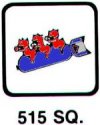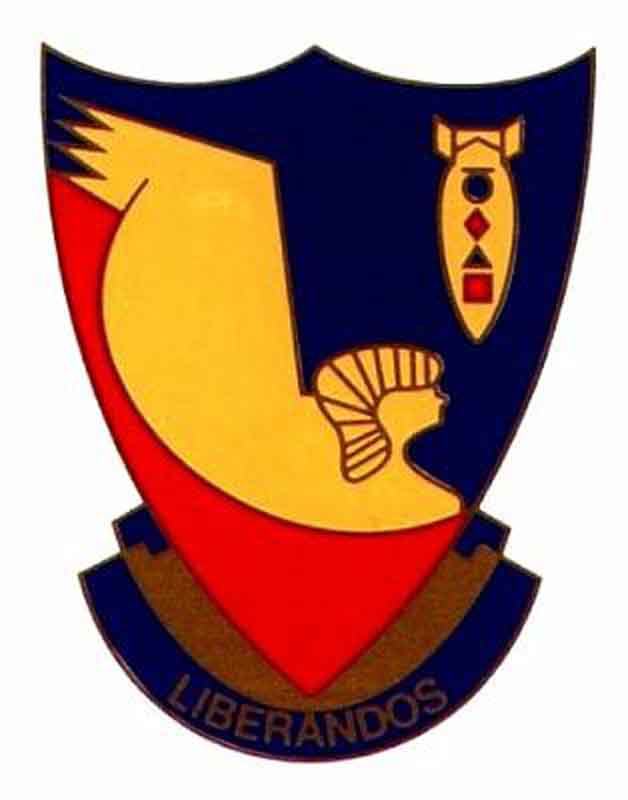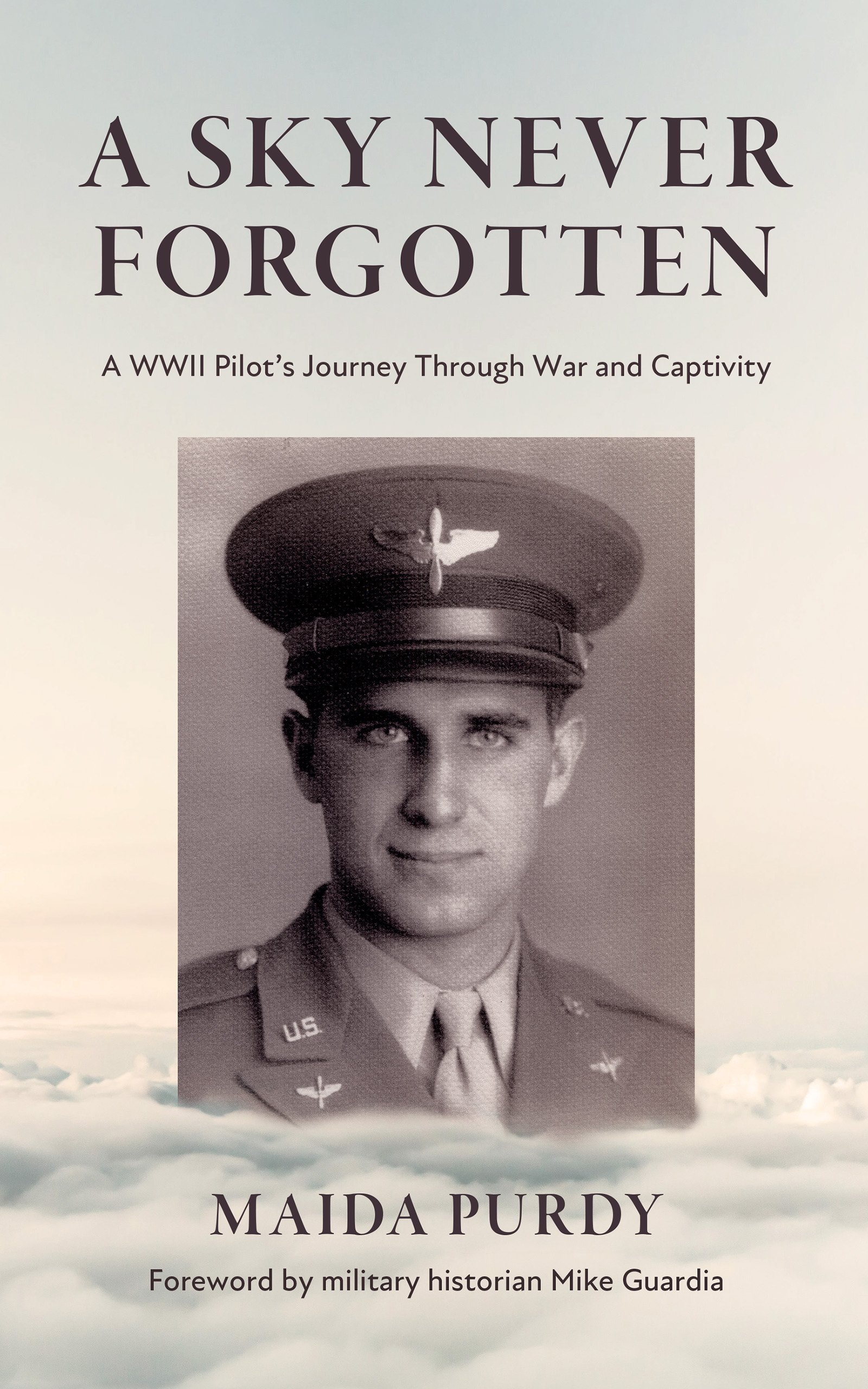Kermit Pete (Pete) Hansen's diary part 4
Life as a POW
The POWs who were already at the camp did not immediately accept the new prisoners. They were concerned that there might be German spies (or stooges as they were called) among them. They had their own intelligence within the camp. After questioning the new POWs and ascertaining that they were indeed downed airmen, they were accepted.
Roll call for the POWs was at 7:00 a.m. and at 4:00 p.m. The barracks were closed with lights out at 9:00 p.m. During the day, the men were occupied with many different activities. They cooked their own meals on a stove that was shared with the other nine combines. Before the Red Cross started sending parcels, the food for the men consisted of black bread and German coffee, potatoes, and jam, barley soup, and horsemeat. They had breakfast and dinner – no lunch. Once the Red Cross packages started arriving, they had more food, including Nescafe, powdered milk, Spam, corned beef, and condensed chocolate. They even made a chocolate pie from the condensed chocolate. They made an ice cream freezer and ice cream made from powdered milk and ice. Representatives from neutral nations such as Switzerland and Sweden came to the camp to make sure the POWs were being fed and treated according to the terms of the Geneva Convention. When the Germans gave Pete and the other men horsemeat, they knew the representatives were coming.
The Red Cross sent books and athletic equipment. The Germans allowed the POWs to participate in competitive sports, such as track, baseball, basketball, and hockey. Pete carved model airplanes out of wood.
The Germans provided no clothing for the men, only long French Army coats. Pete traded the watch that his aunt had given him for an Eisenhower jacket from a British airman who had been a prisoner since the battle of Dunkirk. The men were allowed to write three letters per month, so Pete wrote to his family and asked them to send heavy clothing, vitamins, tooth brush, and tooth paste. The family did send packages and even included hard candy that would not spoil. Mail call was a very precious time for the POWs.
The men spent time planning their escape. They dug tunnels using bed slats for support. They made a bellows system to bring fresh air into the tunnel. The dirt that was dug from the tunnel was passed out in cans, and the men concealed these cans inside of their long army coats. They would then walk along the perimeter of the yard inside the fence for approximately 1⁄2 mile slowly spilling the dirt on the ground, much like an hourglass. If they stepped outside of the fence, they would have been shot. When the dirt became too thick, they would stamp it down. With the excess dirt, the men planted gardens, using seeds they received from the Germans. Pete feels that the Germans knew about the tunnels, but did nothing about it. Pete knew of only one man who escaped, and he was never heard from again. There were about ten or twelve men who tried, but they were recaptured.
Some of the British POWs at this Stalag dug a tunnel and attempted to escape. Fifty airmen escaped; they were recaptured and all were shot. A movie was made of this daring escape called, “The Great Escape,” starring Steve McQueen.
Parts to build a radio and camera along with film were smuggled into the camp in packages from the Red Cross. The camera and radio were secretly assembled and hidden behind books in their library. Pete thought the Germans knew that they had a radio, but they could never find it. The radio was tuned to BBC news and in this way the POWs could follow the progress of the war. They were aware of the D-Day landing in France, and knew it was just a matter of time before Germany would be defeated.
The following italicized excerpts are from the Internet Website www.usafa.af.mil/dfsel/sl3/march/index.html, “The Story of Stalag Luft III,” describing the march to Moosburg, Stalag VIIA at Moosburg, and the liberation of the camp:
On the night of January 27, 1945, Col. Charles G. Goodrich, the senior American officer, announced, “The Goons have just given us 30 minutes to be at the front gate. Get your stuff together and line up!”
At his 4:30 staff meeting in Berlin that very afternoon, Adolf Hitler had issued the order to evacuate Stalag Luft III. He was fearful that the 10,000 Allied airmen in the camp would be liberated by the Russians. Hitler wanted to keep them as hostages. The Russians were within 20 kilometers of the camp.
In the barracks following Colonel Goodrich’s announcement, there was frenzy of preparation – of improvised packsacks being loaded with essentials, distribution of stashed food, and of putting on layers of clothing against the Silesian winter.
As the men lined up outside their blocks, snow covered the ground six inches deep and was still falling. Guards with sentinel dogs herded them through the main gate. Outside the wire, Kriegies waited and were counted, and waited again for two hours as the icy winds penetrated their multilayered clothes and froze stiff the shoes on their feet. Finally, the South Camp moved out about midnight.
Out front, the 2,000 men of the South Camp were pushed to their limits and beyond, to clear the road for the 8,000 behind them. Hour after hour, they plodded through the blackness of night, a blizzard swirling around them, winds driving near-zero temperatures.
At 2:00 a.m. on January 29, they stumbled into Muskau and found shelter on the floor of a tile factory. They stayed there for 30 hours before making the 15.5-mile march to Spremberg, where they were jammed into boxcars recently used for livestock. With 50 to 60 men in a car designed to hold 40, the only way one could sit was in a line with others, toboggan-fashion, or else half stood while the other half sat. It was a 3-day ordeal, locked in a moving cell becoming increasingly fetid with the stench of vomit and excrement. The only ventilation in the cars came from two small windows near the ceiling on opposite ends of the cars. The train lumbered through a frozen countryside and bombed-out cities.
Along the way, Colonel Goodrich passed the word authorizing escape attempts. In all, some 32 men felt in good enough condition to make the try. In 36 hours, all had been recaptured.
The boxcar doors were finally opened at Moosburg and the Kriegies from the South and Center Compounds were marched into Stalag VIIA.
Pete was one of the POWs who marched to Moosburg. He remembers that they marched in the snow, they made sleds, and they carried their possessions. The march was so hard that little by little they left their possessions along the way. When they arrived at the boxcars, conditions were extremely bad. The boxcars were filthy with excrement from the horses that were carried at an earlier time. The men were dirty, hungry, were vomiting, and had diarrhea. Pete had a blanket that he secured over the heads of the men to make a hammock. The hammock lasted for only a short time. It fell down because of the bumpy train ride due to the ruts from bombing of the railroad. It was at this time that Pete felt despair. For the first time, he wondered if he was going to make it.
Stalag VIIA was a nest of small compounds separated by barbed wire fences enclosing old, dilapidated barracks crammed closely together. The camp had been built to hold 14,000 French prisoners. In the end, 130,000 POWs of all nationalities and ranks were confined in the area. In some compounds the barracks were empty shells with dirt floors. In others, barracks consisted of two wooden buildings abutting a masonry washroom with a few cold-water faucets. Wooden bunks were joined together into blocks of 12, a method of cramming 500 men into a building originally intended for 200. All buildings were infested with vermin. As Spring came, some of the Kriegies moved out of the barracks into tents.


The website 376bg.org is NOT our site nor is it our endowment fund.
At the 2017 reunion, the board approved the donation of our archives to the Briscoe Center for American History, located on the University of Texas - Austin campus.
Also, the board approved a $5,000 donation to add to Ed Clendenin's $20,000 donation in the memory of his father. Together, these funds begin an endowment for the preservation of the 376 archives.
Donate directly to the 376 Endowment
To read about other endowment donation options, click here.
Reunion
NOTE change in the schedule !!
DATES: Sep 25-28, 2025
CITY:Rapid City, SD
HOTEL: Best Western Ramkota Conference Hotel; 2111 North LaCrosse St., Rapid City, SD 57702; 605-343-8500
Click here to read about the reunion details.




















